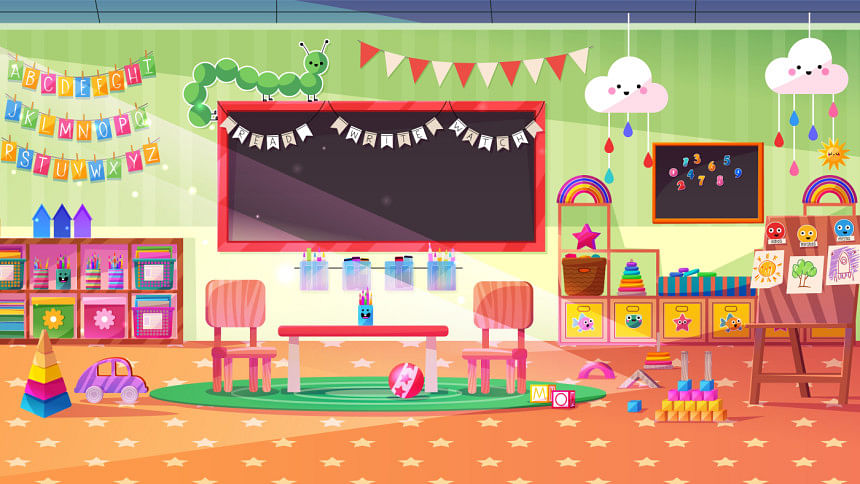Are our preschools truly preparing our youngest? – The Daily Star

Report on Early Childhood Education in Bangladesh: Emphasizing Sustainable Development Goals (SDGs)
Introduction
Recent observations and experiences in Bangladesh’s early childhood education sector have raised critical concerns regarding the current pedagogical approaches. This report highlights these issues with a focus on aligning early education practices with the Sustainable Development Goals (SDGs), particularly SDG 4: Quality Education.
Current Challenges in Pre-Primary Education
-
Overemphasis on Academic Content
Many preschools and kindergartens in Bangladesh prioritize academic content excessively, often introducing multiple textbooks beyond the National Curriculum and Textbook Board (NCTB) materials. For example, one institution introduced 11 additional books for pre-Play classes, reflecting a trend that places heavy cognitive demands on very young children.
-
Impact on Child Development
This academic pressure can hinder meaningful, age-appropriate learning and exploration during critical developmental stages. Cases have been reported where children face difficulties adjusting to schools that emphasize academic achievement over play-based learning, resulting in fatigue, disinterest, and reduced enthusiasm for school.
-
Parental Expectations and Societal Beliefs
There is a prevalent societal belief that early memorization and book-based learning equate to merit, overshadowing the importance of play as a vital learning method. This misconception leads to unrealistic expectations and pressures on young learners.
Historical and Educational Context
-
Kindergarten Philosophy
Originating from Friedrich Froebel’s concept of a “children’s garden,” kindergarten is intended as a nurturing environment promoting holistic development through self-directed play, nature exploration, and creative activities, facilitated by supportive teachers.
-
National Education Policy 2010
The policy emphasizes that pre-primary education should spark children’s interest in learning and motivate school attendance, focusing on social and emotional skill development rather than premature academic rigor.
Alignment with Sustainable Development Goals (SDGs)
-
SDG 4: Quality Education
Ensuring inclusive and equitable quality education and promoting lifelong learning opportunities for all begins with early childhood education that is developmentally appropriate, joyful, and meaningful.
-
SDG 3: Good Health and Well-being
Reducing stress and fatigue in young children by avoiding undue academic pressure supports their mental and physical well-being.
-
SDG 10: Reduced Inequalities
Providing equitable access to quality early childhood education helps bridge gaps between different socio-economic groups.
Recommendations for Improvement
-
Promote Play-Based Learning
Encourage educational institutions to adopt play-based and interactive learning methods that foster curiosity, critical thinking, and social skills.
-
Raise Awareness Among Stakeholders
Educate parents, teachers, and policymakers about the importance of developmentally appropriate practices and the long-term benefits of holistic early childhood education.
-
Strengthen Regulatory Oversight
Implement consistent pedagogical supervision and monitoring to ensure adherence to NCTB guidelines and discourage premature academic pressure in private kindergartens.
-
Align Curriculum with SDGs
Integrate SDG principles into early childhood education policies and practices to support sustainable development through quality education.
Conclusion
To realize the true purpose of preschool education in Bangladesh and contribute to the achievement of the Sustainable Development Goals, it is imperative to shift from an academic-heavy approach to one that values play, exploration, and holistic development. This transformation will prepare children not only for formal schooling but also for lifelong learning and well-being.
Report prepared by Sayma Chowdhury, MEd, Dhaka University, specialist in pre-primary and primary education.
1. Sustainable Development Goals (SDGs) Addressed or Connected
- SDG 4: Quality Education
- The article focuses on early childhood education, emphasizing the importance of age-appropriate, play-based learning rather than premature academic pressure.
- It highlights issues related to curriculum content, teaching methods, and the holistic development of children in pre-primary education.
- SDG 3: Good Health and Well-being
- The article touches on children’s well-being, mentioning how excessive academic pressure can lead to tiredness, disinterest, and emotional stress in young children.
- It stresses the importance of social and emotional growth during early childhood.
- SDG 10: Reduced Inequalities
- Discussion about disparities between government pre-primary programs and private kindergartens, and parental expectations, relates to inequality in access to quality early education.
2. Specific Targets Under Those SDGs Identified
- Under SDG 4: Quality Education
- Target 4.2: Ensure that all girls and boys have access to quality early childhood development, care, and pre-primary education so that they are ready for primary education.
- Target 4.1: Ensure that all girls and boys complete free, equitable, and quality primary and secondary education leading to relevant and effective learning outcomes (implied through the preparation for formal schooling).
- Under SDG 3: Good Health and Well-being
- Target 3.4: Promote mental health and well-being (implied through the focus on reducing stress and emotional issues caused by early academic pressure).
- Under SDG 10: Reduced Inequalities
- Target 10.2: Empower and promote the social, economic and political inclusion of all (implied through addressing disparities in early childhood education quality and access).
3. Indicators Mentioned or Implied to Measure Progress
- For SDG 4 Targets:
- Indicator 4.2.1: Proportion of children under 5 years of age who are developmentally on track in health, learning and psychosocial well-being, by sex (implied through emphasis on holistic development and readiness for primary education).
- Indicator 4.2.2: Participation rate in organized learning (one year before the official primary entry age) (implied by discussion on preschool enrollment and quality).
- Monitoring the curriculum content and teaching methods to ensure alignment with age-appropriate, play-based learning approaches.
- For SDG 3 Targets:
- Indicator 3.4.2: Suicide mortality rate (not directly mentioned but mental well-being is implied).
- Indicators related to child well-being and emotional health, such as reports of stress, tiredness, and disinterest in school activities.
- For SDG 10 Targets:
- Indicators measuring disparities in access to quality early childhood education between government and private institutions.
- Parental satisfaction and expectations as qualitative indicators of equity in education quality.
4. Table of SDGs, Targets, and Indicators
| SDGs | Targets | Indicators |
|---|---|---|
| SDG 4: Quality Education |
|
|
| SDG 3: Good Health and Well-being |
|
|
| SDG 10: Reduced Inequalities |
|
|
Source: images.thedailystar.net








